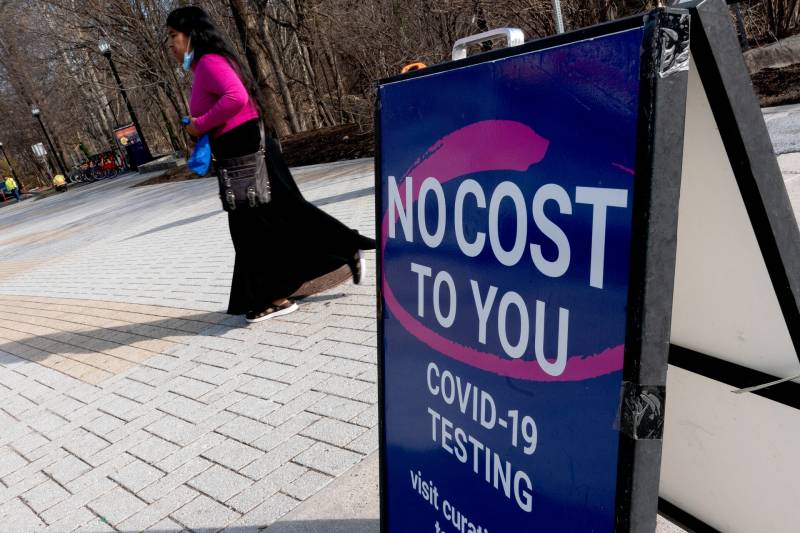Starting Wednesday, March 23, the federal program that’s been funding COVID testing and care for people without health insurance has ended.
This means that finding a test if you’re uninsured just became a little more complex.
Until now, the providers of COVID tests and care could bill the COVID-19 Uninsured Program from the Health Resources and Services Administration (HRSA) for the costs of giving these services to uninsured folks. This change — which was announced only one week ago, on March 16 — means COVID testing sites can no longer bill the federal government for testing uninsured people. In some cases, this means they’ll no longer be able to provide those services to people without insurance.
With the potential of another COVID surge ahead from the new BA.2 omicron variant, it’s important to know how your testing and care options might have changed if you don’t have health insurance. Keep reading for what you need to know.
Your county will almost certainly still offer you a free COVID test with no insurance
While private providers are most affected by this change because they are now unable to bill the federal government for COVID tests for uninsured people (more on that below), your Bay Area county is most likely unaffected by this change. So far, Alameda, Contra Costa, San Francisco, San Mateo, Santa Clara, Sonoma and Marin counties all have confirmed to KQED that there’s no change in their ability to offer uninsured folks free COVID testing.
This is because counties usually draw their funding for testing and vaccination from other sources. For example, a spokesperson for Contra Costa County said that its Board of Supervisors “allocated funding from the American Rescue Plan Act for health services for COVID-19 activities, including supporting vaccination and testing services for the community.”
This means that if you need a COVID test quickly, and don’t have health insurance, going to a county-sponsored site might be your most reliable route.
Use the links below to find your county’s community testing sites:
- Alameda County COVID tests
- City of Berkeley COVID tests
- Contra Costa County COVID tests
- Marin County COVID tests
- Napa County COVID tests
- San Francisco County COVID tests
- San Mateo County COVID tests
- Santa Clara County COVID tests
- Solano County COVID tests
- Sonoma County COVID tests
Other testing sites might have stopped offering free COVID tests for uninsured people
Now that providers can no longer claim the costs of testing uninsured folks for COVID from the federal government, you might find that the testing site down the street from you has stopped offering free tests to people without insurance. But different testing providers are handling it in different ways.
Some sites may continue offering free COVID tests to those without insurance. In the Bay Area, the provider Virus Geeks promises that now that the HRSA funding has ended, they will cover the costs of free testing for uninsured people. “Everyone who does not have insurance is welcome to get testing at any of our sites for free,” said Virus Geeks CEO Frank Lee in an email.

